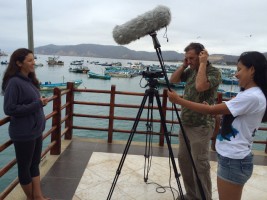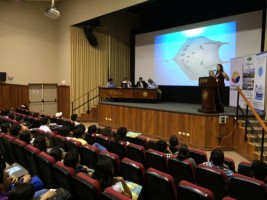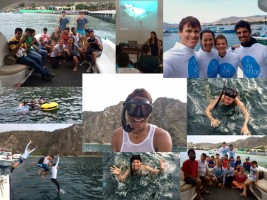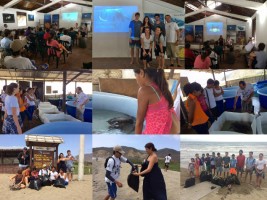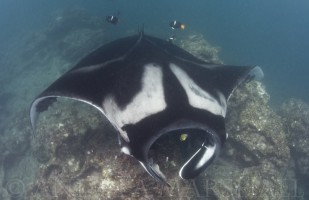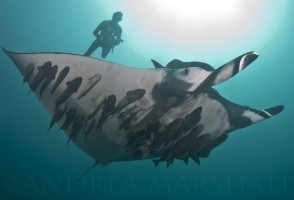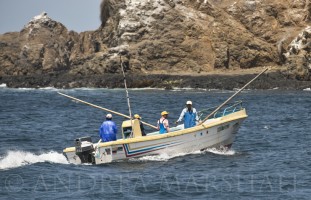Ray of Hope – Working towards a comprehensive conservation plan
for the giant manta ray in Ecuador
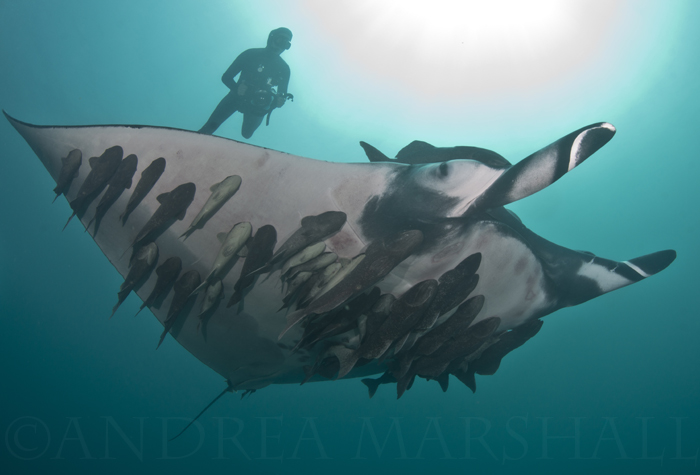
For the past few years, an experienced team of researchers has been investigating Manta birostris at Isla de la Plata and the Cope Seamount, two of the main identified aggregation sites for this species along the Ecuadorian coastline. These locations represent the finest opportunity to study this threatened ray in the wild and contribute to largely absent biological and ecological information on this species.
In only a few seasons, Marine Megafauna Foundation telemetry program has highlighted a dangerous seasonal trend, with individually tagged rays moving south from Isla de la Plata at the end of the season and swiftly being killed illegally by Peruvian fisherman in southern Ecuador or captured by fishermen in northern Peru. Even manta rays tracking in a westerly direction, swiftly entered into international waters, where they were no longer under the jurisdiction and protection of Ecuadorian law.
At the behest of the Ecuadorian government, the Marine Megafauna Foundation plans to develop local and regional management plans for this species through a structured collaboration with the Ministry of the Environment, and beyond this help establish a sustainable tourism industry that may help protect coastal populations rather than exploit them.
Off the back of some of the work MMF has done with the government in Ecuador, the Ministry of the Environment already made significant efforts to protect manta rays and look alike Mobula ray species nationally. This has all but eliminated the capture of these threatened rays in fisheries, and nation-wide educational campaigns have seen even the by-catch of Manta and Mobula species greatly reduced.
The main objectives of this project
To continue these efforts, various objectives have been set:
- To directly partner with local officials to provide real-time information and documentation on where illegal activities are occurring to allow for targeted intervention and future strategic planning.
- The development of a comprehensive science-based national conservation strategy for the giant manta ray to help mitigate threats to the species and safeguard seasonal populations using Ecuadorian waters.
Secondary objectives of the proposed project
- To help implementation of management strategies locally, using Isla de la Plata within the Machalilla National Park as a case study. A full-scale proposal will be drafted based on the intensive research on giant manta rays in Ecuador.
- To deliver consistent community education on marine species and habitat protection, economic benefits and opportunities from tourism, and best practice wildlife interactions (e.g. codes of conduct needed to safeguard species and the local tourism industry). For example, MMF members will conduct an evaluation of the ecotourism industry for manta rays in Puerto Lopez (a city within the intervention area). They will also deliver targeted education to coastal schools, dive centers, Universities, ranger stations, and fishing communities.
- To mobilize support from stakeholders, NGOs and regulatory bodies to help extend management for the species to Peruvian waters where they are still unprotected. Indeed, key members of MMF are IUCN Shark Specialist Group advisors and CMS delegate for Ecuador.
By working with the Ecuadorian government to pave the way, information from this study could be used to update or create better management strategies in other countries which have populations manta rays such as Mozambique, Thailand, Indonesia, Egypt, Mexico, Brazil, Japan, India, Costa Rica.
Final Report Summary
The project was instrumental in gathering more data on Manta Birostris and the threats it faces, as well as to strengthen local governance and promote greater awareness.
- The Marine Megafauna Foundation, in partnership with the Ministry of the Environment and the Machalilla National Park, has gathered real-time data on illegal fishing of mantas and other species around Isla de la Plata. Additionally, a national conservation strategy has been put in place to reduce threats to the mantas in Ecuadorian waters. The data gathered was also used to update the IUCN database on facts concerning Ecuadorian endogenous species.
- The project also helped sensitize the population on best practices in conservation and on economic benefits yielded from a thriving manta ray population. Different activities have been created to further promote sensitization, including guided dives, visits at a rehabilitation center, whale watching excursions and more. Lastly, the founder of MMF contributed a piece to a children’s book on endangered species in Ecuador.
- Since the beginning of 2016, Manta Birostris has become a protected species in Peru as well. MMF has put in place a partnership with EcoOceanice, a Peruvian NGO, to produce and distribute academic material on mantas and their habitats.
- Lastly, a census database containing more than 2,000 manta ray individuals has been created, which is now among the most important databases on manta rays in the world. The information contained in the database has been used to map the effects of climate change on the manta ray population.
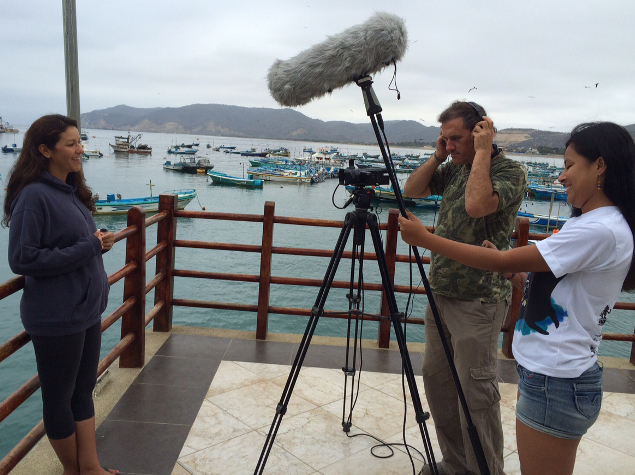
Andrea Marshall interviewing for doco on conservation for mantas in Peru © Andrea Marshall
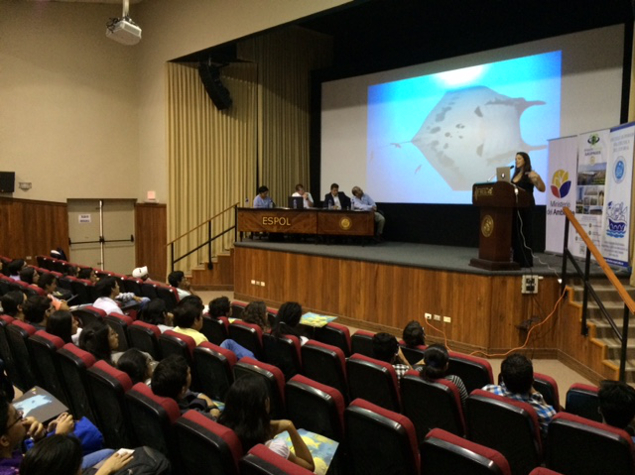
Andrea Marshall's lecture at ESPOL Guayaquil © Andrea Marshall
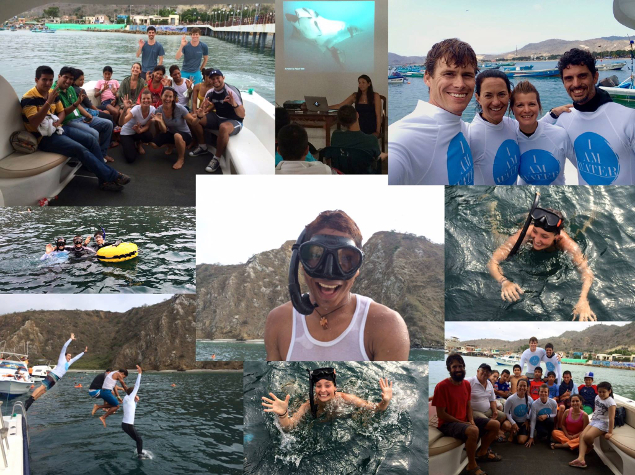
Children's Education Week Puerto Lopez © Andrea Marshall
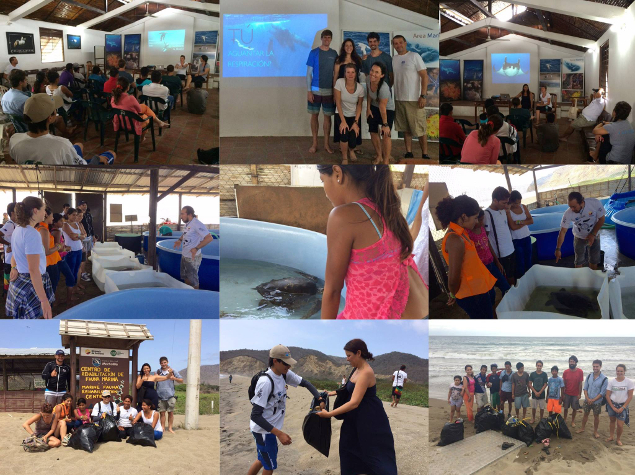
Children's Education Week Puerto Lopez © Andrea Marshall
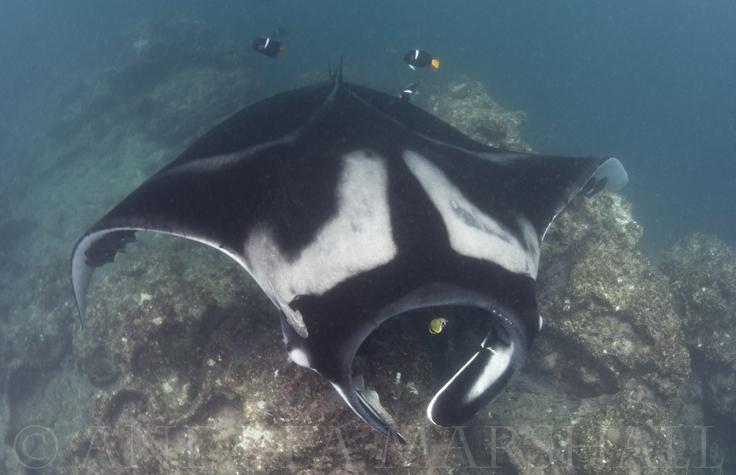
Giant manta cleaning at pinnacle © Andrea Marshall

Freediving with manta © Andrea Marshall
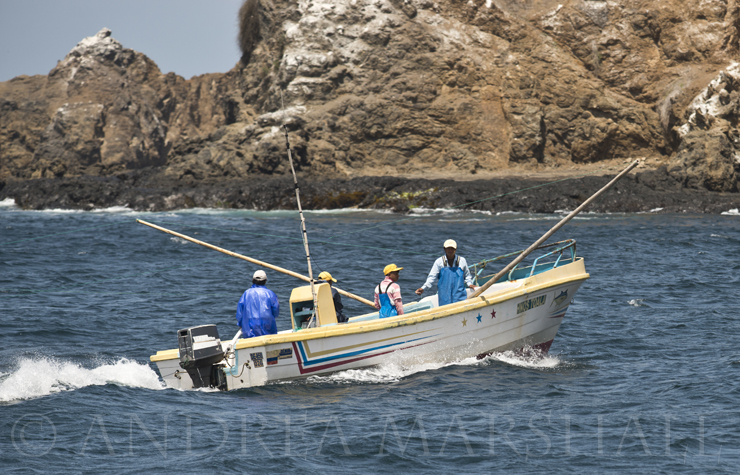
Monitoring illegal fishing in the National Park © Andrea Marshall
